The Best Reporting on Guns in America
In the wake of last week’s shooting, we’ve laid out the most revealing reporting about guns. Shutterstock
Shutterstock
By Blair Hickman, Hanqing Chen, Lois Beckett, Cora Currier and Suevon Lee, ProPublicaThis piece originally ran on ProPublica.
Update: With last weekend’s shootings in Santa Barbara, this collection, first published July 24, 2012, unfortunately seems relevant again. We’ve re-organized our roundup and added new reporting about guns and gun violence in America—looking at mass shootings and mental health, as well as other kinds of gun violence.
Please include your suggestions of other stories in the comments.
Are Mass Shootings Increasing? Depends on How You Count Them
Criminologists have made the same point again and again: the number of mass shootings in America is not increasing. Experts told the Los Angeles Times that mass shootings represent only a small fraction of the annual deaths due to gun violence, and that police data indicate that the overall count of mass shootings per year has not shown any significant increase over time. This conclusion is based on the FBI’s broad definition of a mass murder: four or more people murdered in the same incident, typically in the same location.
But what if you focused just on shootings “in which the motive appeared to be indiscriminate mass murder“? Mother Jones decided to track the number of high-profile attacks in public places excluding armed robberies, gang shootings and domestic violence murders that happened within a home. Using this different definition—a controversial choice—Mother Jones concluded mass shootings are on the rise.
Mass shootings and mental health
When the Right to Bear Arms Includes the Mentally Ill, New York Times, December 2013 A New York Times investigation examines “just how powerless law enforcement can be when it comes to keeping firearms out of the hands of people who are mentally ill.” Many states follow federal restrictions on gun possession, which relieve citizens of the right to bear arms only if they are committed to a psychiatric institution or legally designated as mentally incompetent. This leaves law enforcement in a gray area where they cannot seize weapons from those with serious mental health issues who have not been legally designated.
Some with Histories of Mental Illness Petition to Get Their Rights Back, New York Times, July 2011
A 2011 investigation of the processes by which people with histories of serious mental illness can regain the right to own guns found “vague standards” and “haphazard results.” Judges were often ill equipped to decide cases without information about an applicant’s mental health.
Gun deaths among women & children
In Some States, Gun Rights Trump Orders of Protection, New York Times, March 2013
For years, the National Rifle Association fought new state laws that would require people served with temporary domestic violence protection orders to temporarily surrender their guns. “We kept telling them, ‘He’s got all these weapons,'” the mother of one woman who was shot to death by her husband told the New York Times. “Is there nothing you can do?” The NRA argued that only people who were convicted of a crime, not those simply served with a protective order, should be forced to give up their guns.
The NRA Quietly Backs Down on Domestic Violence, Huffington Post, April 2014
The Huffington Post reported that the gun rights advocacy group “began to relax its position on gun restrictions for alleged domestic abusers after March 2013—the same month the New York Daily News reported that a top NRA official, Richard D’Alauro, had pleaded guilty to harassing his wife.” It also noted that NRA has made efforts to recruit new female members.
Children and Guns: The Hidden Toll New York Times, September 2013
An in-depth review of children who accidentally kill themselves or another child with a gun found that “accidental shootings occurred roughly twice as often as the records indicate, because of idiosyncrasies in how such deaths are classified by the authorities.” For instance, children who accidentally killed others using a gun would be classified as homicide one year and an accident the next.
How Politics Protect Gun Dealers Who Sell Guns Used in Crimes
Wiped Clean, Milwaukee Journal Sentinel, January 2010
Over two years, people who bought guns at one Milwaukee gun store—also a top seller of crime guns nationwide—wounded six local police officers. The store faced intense federal scrutiny and the loss of its license. But after its owners adjusted their roles within the company, 17 years of violations were erased. Part of the paper’s investigative series on “how Congress has created special rules for gun stores that protect even the biggest sellers of guns to criminals.”
Ineffective rules let gun stores endure, Milwaukee Journal Sentinel, December 2010
The ATF is charged with inspecting the country’s 62,000 licensed gun dealers. But it’s rare for a permit to be revoked, and when it happens, stores often simply reopen with a new license in someone else’s name, or sell guns on the side through their personal collections. A national look at how the gun stores across the country used the same tactics used the same tactics that kept Milwaukee’s “Badger Guns” open. (This Washington Post database lets you see which dealers near you have had their licenses revoked.)
Realco Guns Tied to 2,500 Crimes in D.C. and Maryland, Washington Post, October 2010
As part of a larger look at firearms’ paths from dealer to crime scene, the Post’s analysis of gun-trace data for Virginia found that a handful of dealers sold the bulk of crime guns. Realco, the store featured in this piece, sold four times the number of crime guns as the next highest dealer. The kicker? It was all perfectly legal.
Current gun debate may not help beleaguered ATF, Center for Public Integrity, February 2013
The Bureau of Alcohol, Tobacco, and Firearms is one of the weakest links in U.S. gun regulation, according to the Center of Public Integrity. The ATF’s Congressional appropriation includes prohibitions that prevent the government from effectively tracking gun ownership and distribution in the U.S. This includes riders that prohibit the Justice Department from consolidating or centralizing records regarding federal firearms dealers.
Gun Makers Saw No Rule in Curbing Improper Sales, New York Times, May 2013
In 2005, Congress passed a law shielding gun manufacturers from lawsuits by the victims of shootings. A review of court documents before 2005 shows how gun industry executives argued that they should have no responsibility for monitoring whether their guns were being sold to criminals.
The Culture War Over Guns in America
Battleground America, New Yorker, April 2012
Jill Lepore’s thorough look at the evolution of U.S. gun laws—from the Second Amendment, to the 1968 Gun Control Act, to the N.R.A.’s rise to political prominence—is an excellent primer for the modern day gun debate. And provides great context for the other articles here. _Contributed by _ @Corinneavital
State Gun Laws Enacted in the Year Since Newton, New York Times, December 2013
In the year after the Newton massacre, almost every state enacted a new gun law —nearly two-thirds of them loosened gun restrictions. This interactive lets you see how far proposed bills got in your state, organized by issue.
Spitting, Stalking, Rape Threats: How Gun Extremists Target Women, Mother Jones, May 2014
Since the Sandy Hook shootings, gun control activists—including the new group Moms Demand Action—have been trying to mobilize women in support of their policies.A few guns rights activists have responded with harassment and threats of violence, according to women who have been targeted. A California businesswoman who is trying to market “smart gun” technology has also become a target, the New York Times reported in April.
Concealed gun law turns 10 years old, Booth Newspapers, June 2011
A decade after Michigan passed a law making it easier to get a permit to carry a concealed weapon, hundreds of thousands have been issued. This multi-part series shows how regulations meant to keep track of who has concealed-carry licenses—and whose should have been revoked—are a mess. The New York Times has also analyzed the lack of oversight into the concealed-carry permit process in North Carolina, which loosened the requirements to obtain such permits in 1995.
The Gun: The AK-47 and the evolution of war, CJ Chivers, October 2010 A nuanced, in-depth look at what is arguably the most lethal gun of all time.
The NRA’s Electoral Influence,Washington Post, December 2010
This interactive map visualizes how the NRA spread its political clout in the 2010 midterm elections. The organization backed candidates in around two-thirds of congressional races that year, spending a total of $6.7 million. Of those NRA-backed candidates, 80 percent won, according to the Post. The map is part of the Post’s in-depth series on The Hidden Life of Guns, a yearlong investigation that traces how guns exchange hands across the U.S.
Investigating ‘Stand Your Ground’
Stand Your Ground Law Coincides With Jump in Justifiable-Homicides Cases, Washington Post, April 2012
Since Florida passed a Stand Your Ground law in 2005, more than 30 states have adopted similarly broad laws. Justifiable-homicide cases have also been on the rise nationwide.
Florida ‘stand your ground’ law yields some shocking outcomes depending on how law is applied, Tampa Bay Times, June 2012
The Tampa Bay Times analyzed nearly 200 “stand your ground” cases in Florida. Among the findings: Nearly 70 percent of defendants who invoke “stand your ground” went free. Seventy-three percent of those who killed a black person faced no penalty; 59 percent of those who killed a white went free.
US Guns and Mexico
The Truth About the Fast and Furious Scandal, Fortune, June 2012
An investigation into the fallout over Operation Fast and Furious suggests much of what’s been widely reported about the scandal is simply wrong. It doesn’t seem the ATF intentionally allowed guns to fall into the hands of Mexican drug cartels. Based on confidential ATF documents and interviews with law enforcement agents, the piece claims the public charges are “replete with distortions, errors, partial truths, and even some outright lies.” Fortune’s follow-up answers some criticisms raised by Sen. Chuck Grassley, among others. Congress is conducting an investigation into Fast and Furious.
U.S. Stymied as Guns Flow to Mexican Cartels, New York Times, April 2009
Before the ATF’s efforts to monitor gun-trafficking across the U.S.-Mexico border became notorious, this article detailed how easy it was for straw purchasers to buy guns in the U.S. and get them across the border to Mexico, and how difficult it was for federal regulators to build a case against them. About 90 percent of the 12,000 guns recovered and traced in 2008 by Mexican officials came from U.S. dealers.
Your support matters…Independent journalism is under threat and overshadowed by heavily funded mainstream media.
You can help level the playing field. Become a member.
Your tax-deductible contribution keeps us digging beneath the headlines to give you thought-provoking, investigative reporting and analysis that unearths what's really happening- without compromise.
Give today to support our courageous, independent journalists.
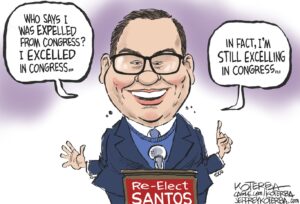
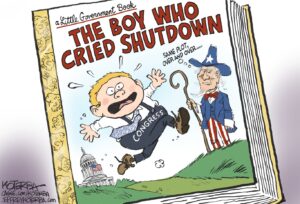
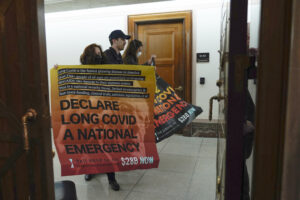

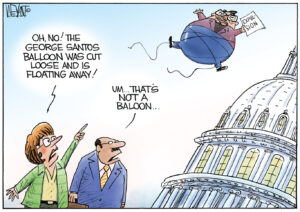
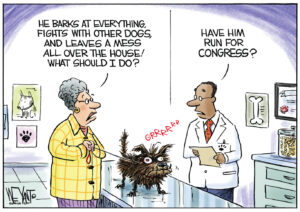
You need to be a supporter to comment.
There are currently no responses to this article.
Be the first to respond.